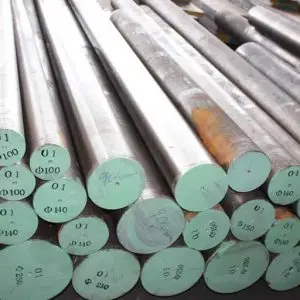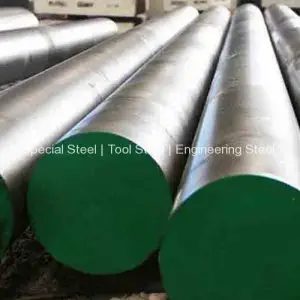5 Surprising Tool Steel Uses You’ve Never Thought of
Table of Contents
Introduction

When we think of tool steel, images of industrial tools, molds, and dies often come to mind. Tool steel is celebrated for its hardness, heat resistance, and durability, making it indispensable for heavy-duty manufacturing tasks. But did you know that its applications stretch far beyond these conventional areas?
In this blog, we will explore five tool steel uses that are unexpected yet incredibly impactful. These examples reveal the material’s versatility and its ability to excel in environments that demand high performance. By understanding these surprising applications, you’ll gain a broader appreciation for tool steel’s adaptability in industries beyond the obvious.
Let’s dive into these remarkable uses and uncover how tool steel is quietly influencing various fields.
The Unique Properties of Tool Steel
Before exploring its uses, let’s first look at what makes tool steel such a sought-after material. Here are some of its defining properties:
- Hardness and toughness: Tool steel maintains its strength even under significant stress and pressure.
- Wear resistance: Its ability to resist wear makes it ideal for repetitive or high-friction tasks.
- Heat resistance: It performs reliably even at extreme temperatures.
- Precision: Tool steel can be machined to meet tight tolerances, making it a favorite for applications requiring accuracy.
- Corrosion resistance: Many tool steel alloys resist rust and corrosion, prolonging their service life.
These characteristics are why tool steel finds its way into so many industries. Now, let’s explore some lesser-known tool steel uses that might surprise you.
Musical Instrument Manufacturing
Musical instruments may not be the first thing that comes to mind when discussing tool steel uses, but this durable material is making significant strides in the music industry. Certain components of high-performance instruments, such as piano strings and drum hardware, rely on tool steel for its superior tensile strength and ability to withstand constant stress.
For example:
- Piano strings: Tool steel strings ensure that the instrument delivers consistent and rich tones over time, maintaining its sound quality even under high tension.
- Drum components: Drum stands and cymbals often use tool steel to provide stability and durability, even during intense performances. The ability of tool steel to resist wear and tear makes it ideal for components that endure constant use and movement.
- Stringed instruments: Some high-end guitar strings are made from tool steel to enhance their longevity and sound quality. These strings remain strong and provide a sharper, more vibrant tone than traditional materials.
The use of tool steel in musical instruments showcases how this industrial material can bridge the gap between functionality and artistry. The ability to enhance performance and durability while maintaining aesthetic qualities demonstrates the versatility of tool steel uses across different industries, including music.
Precision Surgical Tools


The medical field demands materials that are both durable and precise, which makes tool steel an ideal material for a variety of medical applications. Thanks to its exceptional properties, tool steel is extensively used in the creation of surgical instruments that require sharpness, durability, and resistance to wear, even after repeated sterilization cycles. The wide range of tool steel uses in medicine demonstrates its vital role in maintaining the highest standards of care during complex procedures.
Key benefits of tool steel in medical applications:
- Edge retention: Scalpels and other cutting tools crafted from tool steel stay sharp longer, ensuring precision in delicate surgeries.
- Corrosion resistance: Medical-grade tool steel can endure the harsh sterilization processes, including autoclaving, without deteriorating. This resistance to corrosion ensures that surgical instruments remain safe and effective for repeated use.
- Precision: Tool steel’s machinability enables the production of surgical tools with exact dimensions. This is crucial in maintaining the accuracy required for intricate surgeries, where even the smallest deviation can have significant consequences.
Examples of surgical instruments made with tool steel include:
- Surgical scissors
- Retractors
- Hemostats
- Bone saws
These examples of tool steel uses in surgery highlight its importance in ensuring reliability and longevity for tools that directly impact the success of medical procedures. By leveraging the unique properties of tool steel, medical professionals can rely on instruments that withstand the demands of high-stakes operations, supporting global healthcare practices.
High-End Kitchen Knives
Another fascinating tool steel use can be found in professional kitchens. High-end kitchen knives crafted from tool steel are prized by chefs for their ability to retain sharpness and resist wear, even after heavy use.
Unlike regular stainless steel knives, tool steel knives require less frequent sharpening while offering unmatched precision. They are especially useful for cutting through tough ingredients like meat and root vegetables.
Here’s a detailed comparison table highlighting why tool steel is a popular choice for kitchen knives:
| Feature | Tool Steel Knives | Regular Stainless Steel Knives |
|---|---|---|
| Edge retention | Excellent | Moderate |
| Corrosion resistance | High | High |
| Toughness | Superior | Average |
| Maintenance required | Moderate | Low |
Professional chefs value tool steel knives for their reliability in demanding culinary environments, making this a standout application of the material.
Custom Jewelry and Art
Artisans and jewelers have discovered many creative tool steel uses in their craft, taking advantage of its exceptional durability and unique aesthetic. While softer metals like gold and silver are traditional choices for jewelry, tool steel uses in the art world are becoming more prominent due to its strength and versatility. Tool steel is particularly popular for creating bold, contemporary designs that stand out in the realm of custom jewelry and modern sculptures.
Why tool steel?
- Strength: Tool steel resists scratches and deformation, ensuring that the finished pieces maintain their integrity over time. This makes it an ideal material for jewelry and art that will be worn or handled frequently.
- Versatility: Tool steel uses extend to creating intricate shapes, providing artisans with the flexibility to design unique pieces that require precision and craftsmanship.
- Polished finish: When polished, tool steel takes on a sleek and modern appearance, making it highly desirable for artists and jewelers looking to achieve an industrial yet sophisticated look.
Examples of tool steel in art and jewelry:
- Minimalist rings and bracelets
- Custom sculptures
- Industrial-inspired earrings
Artists and jewelers are increasingly drawn to tool steel uses because of its ability to combine functionality with design innovation. Whether for creating robust, wearable art or striking sculptural pieces, tool steel uses are helping to shape the future of modern art and jewelry design.
Robotics and Automation Components


In the era of advanced robotics and automation, tool steel is playing an essential role in the construction of precision components. Robotic systems require materials that can withstand repeated stress and perform reliably over time, making tool steel an ideal choice.
Key applications in robotics:
- Gears: Tool steel gears are durable and resistant to wear, ensuring smooth operation.
- Bearings: The strength and precision of tool steel make it perfect for robotic bearings.
- Joints and arms: Robotic arms crafted with tool steel can handle high loads and maintain stability during operations.
These applications demonstrate how tool steel supports the development of cutting-edge technologies in industries like aerospace, automotive, and manufacturing.
Conclusion
Tool steel is more than just a material for industrial tools and dies—it’s a versatile solution for various unexpected applications. From musical instruments to robotics, the examples in this blog highlight the ingenuity behind these surprising tool steel uses.
Understanding the full potential of tool steel encourages innovation, offering opportunities to push boundaries in fields that demand both strength and precision. As technology and design continue to evolve, tool steel will undoubtedly play a pivotal role in shaping the future.
FAQ
What is tool steel primarily used for?
Tool steel is primarily used for manufacturing cutting tools, molds, and dies. Its durability, heat resistance, and ability to maintain a sharp edge make it ideal for a wide range of industrial applications. The versatility of tool steel uses extends to various fields, including automotive, aerospace, and manufacturing.
Can tool steel be used in creative industries?
Yes, tool steel uses have expanded into creative industries, especially in jewelry and art. Its strength, malleability, and sleek appearance allow artisans to create unique, modern designs that combine functionality with aesthetic appeal.
Why is tool steel favored in robotics?
Tool steel uses are highly regarded in robotics due to its wear resistance, precision, and ability to withstand high stress. These properties make it the perfect material for gears, bearings, robotic arms, and other crucial robotic components, ensuring longevity and performance in demanding environments.
Is tool steel suitable for medical tools?
Absolutely. The tool steel uses in the medical field are extensive, with its corrosion resistance, sharpness, and sterilization capabilities making it ideal for creating reliable surgical instruments. From scalpels to bone saws, tool steel ensures that medical tools remain durable and effective.
Where can I find more information about tool steel uses?
For more information about tool steel uses, consult engineering, industrial, or material science resources. These fields provide in-depth insights into the various benefits and applications of tool steel, covering a wide range of industries and uses.
